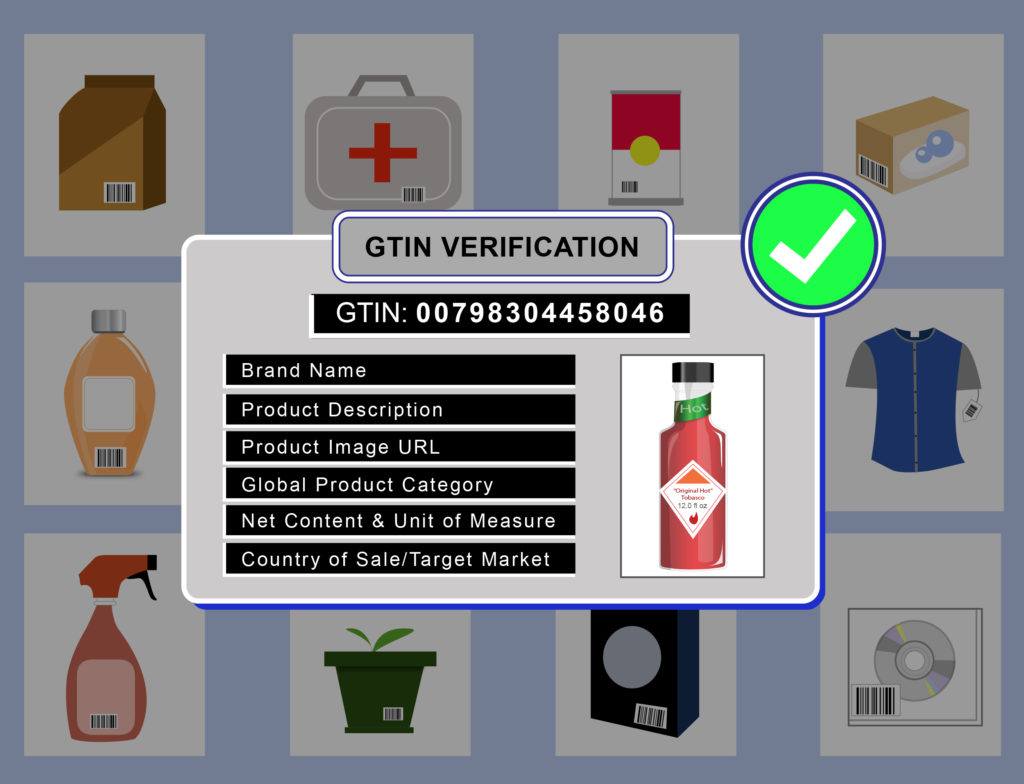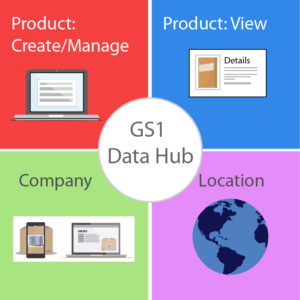Even though access to GTIN.Cloud is included with the GS1 UPC Barcode Service, one of the promoted benefits of licensing a Company Prefix from GS1 is access to an optional online tool called the Data Hub. As part of GS1 Barcode Service/Support packages, our consultants personally assist members with assigning GTINs and managing their UPC product data using both cloud databases and the GS1 Data Hub. While the GS1 Data Hub is a conduit to the “Verified By GS1” initiative, it has some constricting limitations and should not be the sole source of managing UPC barcode product data.
While GS1 is a “non-profit” standards organization and the sole licensor of GTINs/Company Prefixes, they also monetize the product data their members enter in the GS1 Data Hub. To entice new members, limited access to the Data Hub is automatically provided with membership subscriptions and renewals. For a complete breakdown of the different components of the Data Hub, please visit https://www.barcode.graphics/gs1-data-hub-overview/.
Data Hub Basics
Out of the four components of the GS1 US Data Hub, the Product Create/Manage functionality is available to companies who correctly obtain a GS1 Company Prefix. Each member company automatically gets a limited free subscription for one user as a benefit of their GS1 US® membership.
Product – Create/Manage: This is the primary tool included with licensing a GS1 Company Prefix, which is a centralized location for managing GTIN assignments and limited product data. Only one user account is included – access for additional users may be purchased (starting at $1000). Rather than recording UPC (GTIN) assignments in a local spreadsheet, companies can maintain their assignments online. It is important to note that although some retailers can access the Data Hub, they do not use the Data Hub to discover products or consume data for their internal systems. Most retailers and marketplaces, including Amazon and Google, require significantly more product attributes and images and require suppliers to enter their data directly on their own platforms.
Since we administer barcode compliance for numerous retailers, we commonly see mismanaged UPC assignments when an individual within a company has kept the product barcode data on a local computer or didn’t train someone adequately on what needs to be done to maintain accurate UPC assignments. As an online repository, this allows new employees visibility on what has been previously assigned. As part of the GS1 Barcode Service/Support subscriptions, our individual barcode consultants can either handle all aspects of managing GTIN information for the Data Hub or simply validate the data entered is correct.
When the first iteration of the Data Hub was released ten years ago, it was called the “Data Driver”. GS1 wanted to provide a mechanism to help members adhere by their global standards and act as a storage mechanism for UPC assignments. As a way to justify their annual renewal fees, GS1 wanted to bolster up and promote the Data Hub as their main repository. The issue is that GS1 also owns the large-scale GDSN (Global Data Synchronization Network) which is the infrastructure for trading partners to share product data with a wide array of attributes. The Data Hub does NOT synch with their GDSN network and does not provide the functionality to adequately share data. To new companies, this concept of product data catalogues and the GDSN is somewhat foreign and complex. Consequently, it is imperative to understand the fundamental purpose of the Data Hub and know it’s short-comings.
Data Hub Constraints
- Limited Export Capabiliites – Whereas a UPC (GTIN-12) is commonly used on the indvidual products (eaches), GTIN-14 are used for the varying levels of packaging. GS1 has standards on how to convert GTIN-12s to GTINs for case markings and the assignments/correlation can be saved to the Data Hub. Unfortunately, GS1 does not allow companies to EXPORT their own GTIN-12/GTIN-14 data unless they spend $4500 more on a “add-on” export function. Consequently, our consultants normally save GTIN-14 data in other cloud databases which enable clients to export ALL their product data without having to spend addional money with GS1.
- Support Constraints – Since GS1 is truly just the global standards organization, they do not provide immediate technical support for this ancillary tool. There have been numerous occurances when Data Hub functionality has been inoperable and the corrections took weeks.
- Placement-Only Barcode Functionality – Although the Data Hub conveys that the barcode images it provides are low resolution (.PNG files & .EPS) and not for use on packaging or labels, our testing label constantly uncovers issues where a company made a mistake and used the PNG for package artwork rather than a for-position-only graphic. Print-ready digital barcodes must be high-resolution and meet GS1 software certification parameters. Ironically, the EPSs from Data Hub are not high resolution nor have necessary bar width adjustment compensation.
- Limited Attributes – The Data Hub only requires a handful of data attributes ( i.e. name, size, weight, etc), and most trading partners’ data requirements involve 20-100 different data attributes. Amazon requires at least 30 different data fields for each product so the GS1 Data Hub is normally incomplete and not usuable as a central repository.
If Data Hub is limited, is it worthwhile for companies to use?
Absolutely. Although we do not believe it should be the primary tool to save your UPC product data, there is a future GS1 initiative in which the GS1 Data Hub plays a significant role. Right now companies like Amazon and Google validate suppliers (new and old) UPC GTINs/Company Prefix against the GS1 Company Database to make sure the UPC is licensed to the actual brand supplier. This process has been extremely successful in uncovering poorly identified products which eventually erode customers’ confidence in published data. The “Verified By GS1” initiative is a program GS1 is attempting to enable trading partners to actually validate UPCs and not just the prefix for product data integrity. Here is a link that describes the program, https://www.barcode.graphics/verified-by-gs1/.
Since technology is always evolving and the need for better quality data is never-ending, companies that establish a process utilizing this tool will be in a better position in the future to comply with retailers’ requirements. Our support consultants can assist in making sure your company is ready to comply with both today’s and the future’s product identification requirements.



